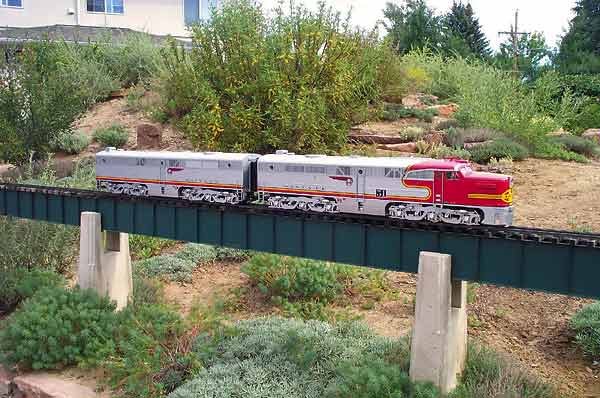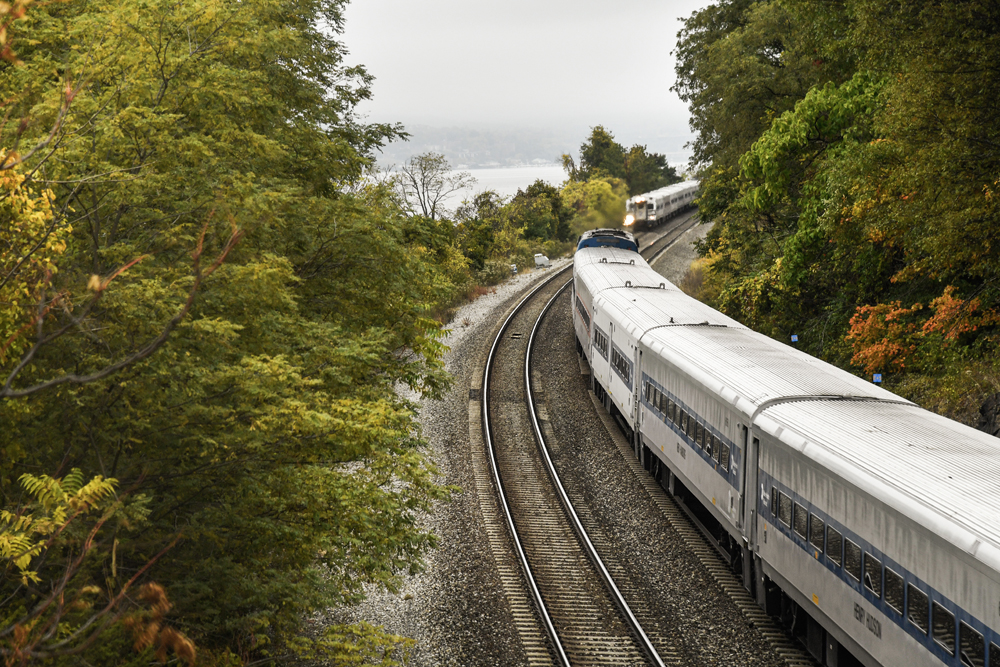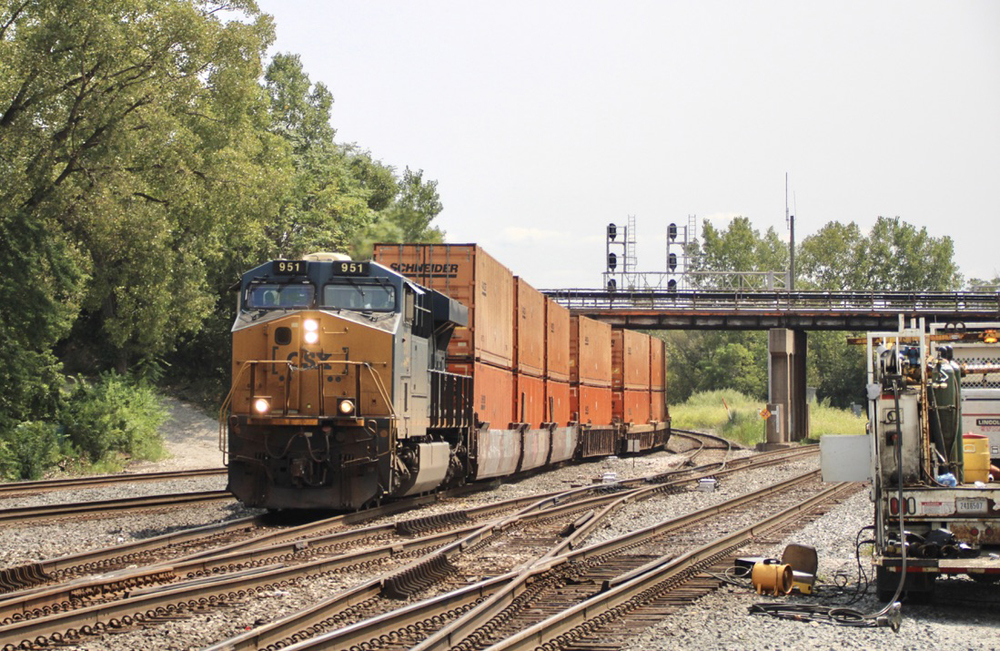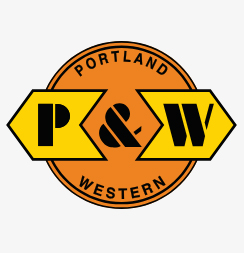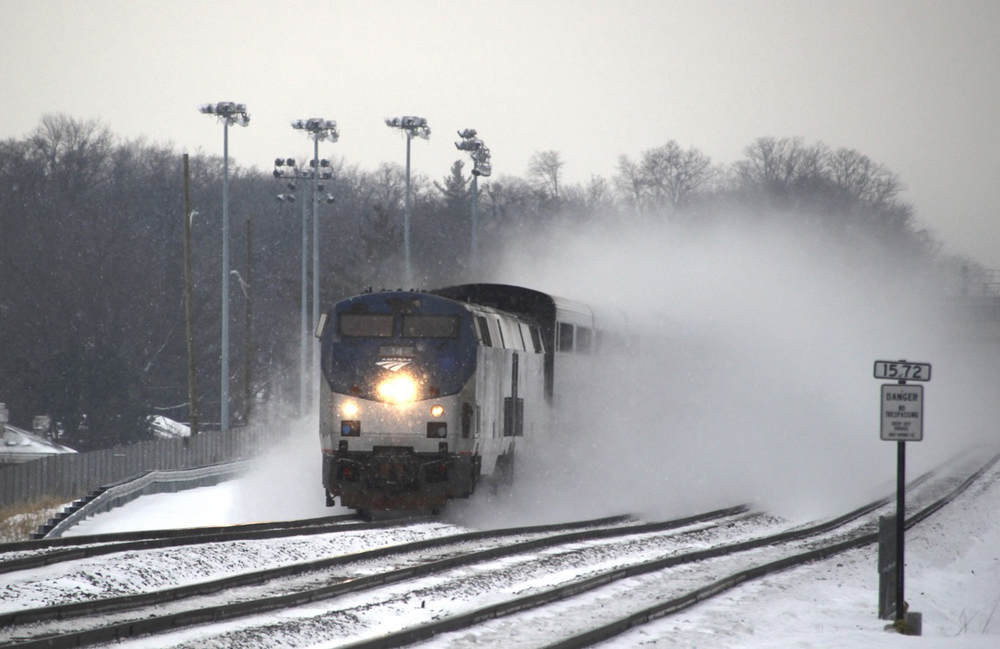1:29 scale, gauge-1 Alco PA-1 A-B diesel set
USA Trains
PO Box 100
Malden MA 02148
Price: $689.95
Web site: www.usatrains.com
Mostly plastic, scale models of Alco PA-1 units; all wheels powered; four traction tires per unit; sprung, articulated trucks for short-radius curves; sound ready; six electrical pickups per truck; large can motor with flywheel in each truck; switches underneath each unit control motor, smoke, lights, and sound; operating smoke units; cab lights; two road numbers for each unit for each road name, for A-B-B-A operation; lighted number boards; directional marker lights; metal side screens, fan grills, handrails, and other details; rotating fans; rubber diaphragms; opening doors; hook-and-loop couplers installed (knuckles supplied); available in 12 road names. Dimensions: Length, (A & B) 53″ (A unit, 26 1/2″; B unit, 25″); width, 4 1/16″; height, 5 7/8″. In 1:29 scale, this works out to 128’1″ x 9’10” x 14’2″. Current draw running light: A unit, 2A; B unit, 1.75A. Current draw at 24V, full slip: Both units together, 8.5A. Tractive effort: A unit, 2 lb. 13 oz., or about 36 average freight cars; both units together, 6 lb., 5 oz., or about 80 average freight cars
Pros: High fidelity to prototype; high level of detail; smooth and quiet operation; excellent paint and graphics; flywheel motors for smooth operation; removable front coupler panel on A-unit for coupler installation
Cons: High current draw; engine starts before lights come on; rubber diaphragms do not compress properly; some details fragile
USA Trains’ long-awaited models do not disappoint. They are magnificent. Our review samples are an A-B set (separate A-units are also available at $349.95-separate B-units are not available) of Santa Fe engines dressed up in SF’s “War Bonnet” paint scheme. Together they are more than four feet in length. The bodies are made of plastic, but most other details, including grills, handrails, etc. are metal. Truck sideframes are plastic, as are the rather fragile cab steps. The lighted cab features a full interior with an engineer (no fireman). There are dual headlights, directional red/green marker lights, and number boards (without numbers-correct for Santa Fe) on the A-unit. Each unit has a smoke generator that puts out a fair amount of white smoke, especially at higher speeds. The units are sound ready, with speaker grills built into the floors. On-off switches underneath control the motors, lights, smoke units, and sound.
There has been some concern regarding how USA Trains would handle the front coupler of the A-unit. They did it right, in my opinion. As supplied, there is a plain panel across the front of the pilot. If the engine is to be the lead unit, this panel is left in place, maintaining the clean lines of the engine. If it is to be a trailing unit in an A-B-A lashup, for instance, the panel is easily removed. Behind it is a mounting post for a coupler. The engine is supplied with hook-and-loop couplers installed (only three) and knuckles supplied separately (four).
Each railroad’s PAs had minor detail differences. For instance, the Santa Fe and Delaware & Hudson railroads had small number boards atop the cab. Some railroads had dual headlights while others had singles. USA Trains’ engines might not be accurate to every detail for each road name offered, but the basic units are accurate and will provide a good platform for some creative kitbashing.
As an aid to getting around tight curves, the engines do not couple together at a prototypical distance. If they did, the rubber diaphragms would not compress properly anyway. Also, to assist on unprototypically tight curves, each truck has one axle articulated-it swings from side to side, effectively shortening the rigid wheelbase of the trucks. Even so, these are very big engines and really should have 8′- to 10′-radius curves to look good.
Both A and B units are powered. Each truck has three powered axles (one more than the prototype, which had an idler axle in the middle). Inside each motor block is a large can motor with a shaft-mounted flywheel, which drives each axle through a gear train. Electricity is picked up from the rails via four wheels and two sliding skates. There are two traction tires on each truck.
These locomotives draw a lot of current-around four amps when running light. At full load, with wheels slipping, the draw is over 8 amps. Also, starts, especially sudden ones, can spike at 8 amps, so you’ll need a large power supply to run the engines. Slow-speed operation is excellent. The engines will just creep away. Top speed, while acceptable and pretty brisk, is probably not the 80 plus scale miles per hour that the prototype travelled. Headlights come on only after the engines are in motion. Hauling capacity, especially when running both units together, is probably more than most people will require.
Our initial tests suggest that these locomotives are all that could be hoped for. They look wonderful alone and will be stunning when heading up a long train of streamlined passenger cars.





